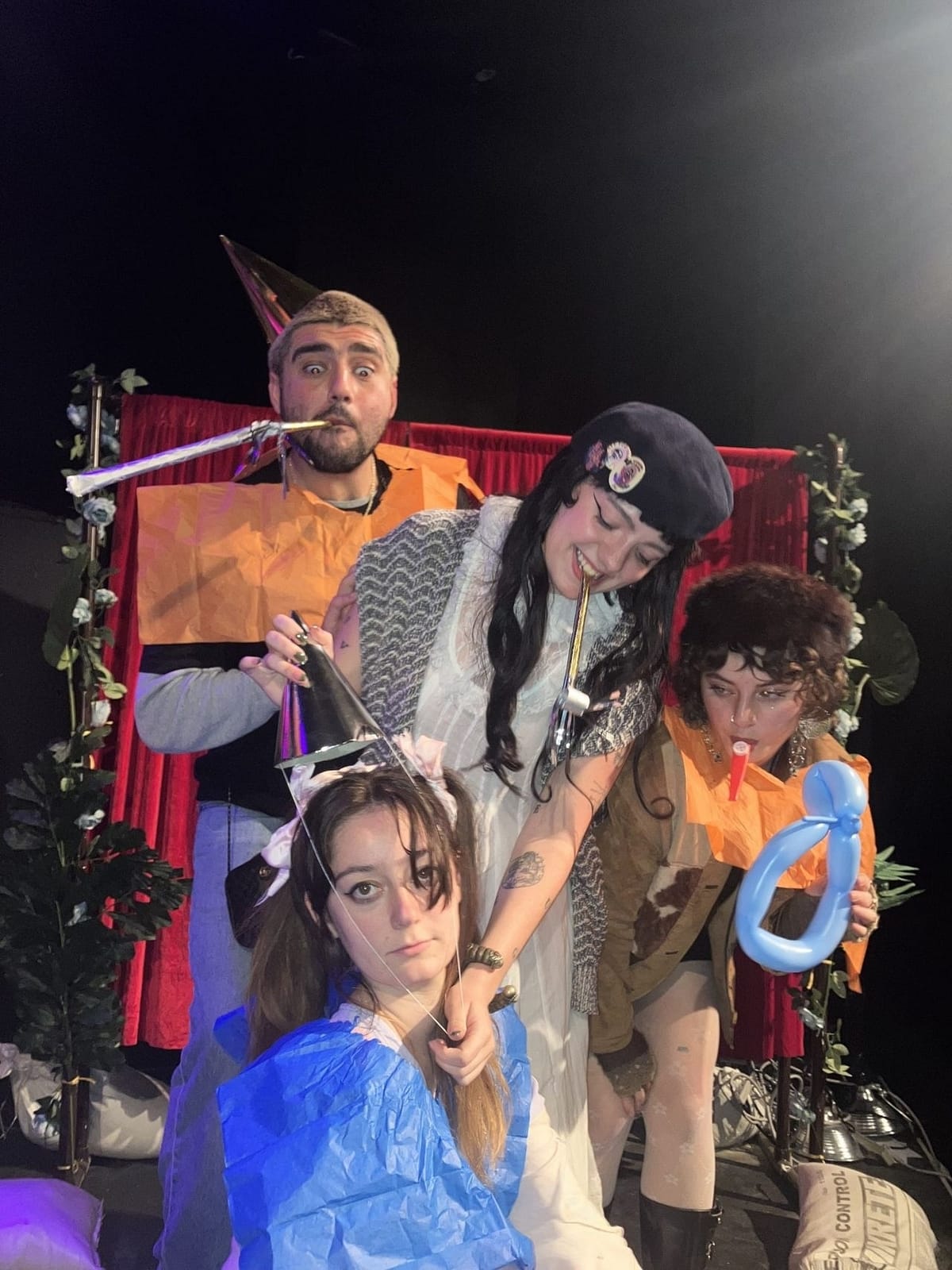SIX SCENES FOR SCENE SIX OF HEINER MÜLLER’S HAMLETMACHINE
The Elysian
Los Angeles
Nov. 11, 2023
As a non-theater-theater-person (terrified of the inherent self-perpetuated humiliation associated with freeform improv groups), I am unsure what to expect walking into the rehearsal process for Experience Cult Research Group’s newest project, Six Scenes For Scene Six of Heiner Müller’s Hamletmachine. I hear buzzes about devised theater, taxidermy, Jerzy Grotowski, charades, The Elephant Calf, balloon animals, and even an Andrew Lloyd Webber Cats musical medley all working in conjunction to create the psychophysical performance I am about to immerse myself in.
I know about the possibility of audience interaction/participation, as cultivating an active experience for all participants is imperative to the research that Experience Cult engages with. And what does this mean for me, who fears saying the wrong thing under the guise of a large crowd and who is daunted by the task of following “intuition” or “gut” (whatever that even means).
Speaking to ECRG’s founders, Brin Constant Gordon and Patton Small, prior to the rehearsal, I am introduced to the “I Am One Who” exercise, a process of “witnessing being witnessed,” with the challenge to resist the impulse of performativity when faced with a room full of looming eyes.
“The goal being to channel impulse into containers of action,” Patton tells me.
“How do you know what is a true impulse and what is just exhibitionism?” I find myself asking. “How does one not get stuck?”
Patton assures me that people often do get stuck, that most of the exercise consists of navigating that exact feeling of “stuck.” He claims that by transmitting our internal tension into contained physicality, we are confronted with the task to traverse ingrained social behaviors constrained by psychophysical patterns that have developed over the course of our lives. In many ways, the goal of the “I Am One Who” is to become “unstuck” and allow for mutability, rearticulating the way we socialize, interrogate, and ultimately break out of the industrial world.
Sounds challenging.
Actor Amelia Whitney is one of the first to perform an “I Am One Who.” A few faces are new in the crowd this night, mine being one of them.
After a series of throwing shoes, rolling on the floor, uncertain mutterings, and laughter, Amelia tells the small audience that it feels seemingly masochistic to be perceived in an “I Am One Who.”
“It feels like you’re going insane.” She laughs. “The more anxious I feel, the more I need to do something radical to break the container.”
But from my voyeur perspective, Amelia does break the container.
And isn’t all social performance in some ways intrinsically masochistic? Do most forms of socialization not require an air of performativity? A self-governed responsibility to “serve” your audience?
The night of the show on November 11 begins with Brin Constant Gordon as our host, who instructs us to engage with a series of six scenes and then vote on which scene should serve as the sixth scene in Heiner Müller’s Hamletmachine. The cast then begins formally enacting a scene from Bertolt Brecht’s The Elephant Calf, followed by a game of semi-prescripted charades that devolves into Cats the musical, followed by a gallery of taxidermied ferrets (served with wine and cheese of course). Amelia performs an “I Am One Who,” this time in front of 200 people rather than 20, and the show culminates with balloon animals, face paint, kazoos, and a happy birthday song. The entire crowd of 200 people stands up and migrates to a warehouse space next door to the theater, where we all perceive one another, eat cake, and party (yes, this is all still part of the show).
The live band plays as Brin Constant Gordon rises in front of the crowd and announces the winning scene.
No surprise, it’s Cats.






